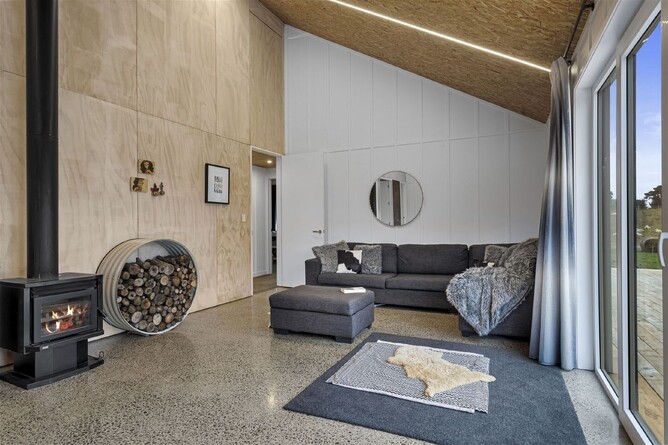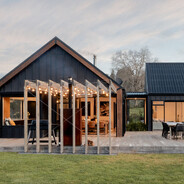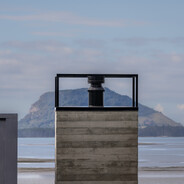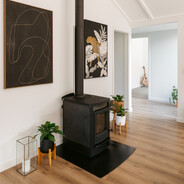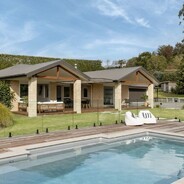New Zealand, renowned for its stunning landscapes and diverse climates, presents unique challenges and opportunities for architects designing homes that need to be comfortable year-round. From the subtropical north to the temperate south, and the alpine regions in between, the country experiences a wide range of weather conditions influenced by its geographical location and proximity to both the Tasman Sea and the Pacific Ocean. This article delves into the essential considerations and strategies architects employ to create homes that are not only resilient against the elements but also optimise comfort and energy efficiency throughout the seasons.
Understanding New Zealand's Climate Zones for Architectural House Design
New Zealand can be broadly divided into several climate zones, each with its own distinct characteristics:
1. Northland and Auckland: Enjoy a subtropical climate with mild winters and warm, humid summers.
2. Waikato and Bay of Plenty: Experience a temperate climate with moderate rainfall throughout the year.
3. Wellington and the West Coast: Known for a windy and often wet maritime climate.
4. Central Otago and Canterbury: Feature a semi-continental climate with hot summers and cold winters, influenced by the Southern Alps.
5. Southland and Fiordland: Have a cool temperate climate with high rainfall and occasional snowfall in winter.
Architectural House Design Principles for Year-Round Comfort
House Orientation and Floor Plan:
One of the fundamental strategies in designing for New Zealand's varied climate is optimising the orientation and layout of the home. This includes:
Solar Gain: Orienting the main living areas and windows towards the north to maximise solar gain during winter, when the sun is lower in the sky. This helps in naturally heating the home and reducing reliance on artificial heating systems.
Shelter from Winds: Designing the layout to provide shelter from prevailing winds, especially in coastal regions like Wellington. Utilising landscaping and architectural elements such as windbreaks can significantly enhance comfort.
Building Materials and Insulation:
Selecting appropriate building materials and ensuring effective insulation are crucial for maintaining thermal comfort year-round:
High Thermal Mass: Using materials with high thermal mass, such as concrete or masonry, can help regulate indoor temperatures by absorbing and slowly releasing heat. This is particularly beneficial in regions with temperature fluctuations like Central Otago.
Effective Insulation: Installing quality insulation in walls, floors, and roofs is essential for reducing heat loss in winter and heat gain in summer. New Zealand's Building Code specifies minimum insulation requirements, but exceeding these can significantly improve energy efficiency and comfort.
Ventilation and Airflow
Managing ventilation and airflow is vital to prevent overheating in summer and maintain fresh indoor air quality:
Cross-Ventilation: Designing the home to allow for cross-ventilation by strategically placing windows and vents to facilitate natural airflow. This helps in cooling the interior during hot summer days.
Mechanical Ventilation Systems: Incorporating energy-efficient mechanical ventilation systems, such as heat recovery ventilation (HRV), ensures continuous fresh air circulation without compromising energy efficiency.
Adaptable Spaces
Creating adaptable spaces that can respond to changing weather conditions and varying occupant needs:
Outdoor Living Areas: Designing covered outdoor areas or verandas that can be utilised for sheltered outdoor living during both summer showers and winter sun.
Flexible Internal Layouts: Providing flexibility in internal layouts with movable partitions or open-plan designs that can be adjusted to accommodate different activities and changing weather conditions.
Radley Design Case Study:
Waimakiriri sustainable House Design: The brief was to create an environmentally focused passive-designed home built to withstand the harsh rural Canterbury winter conditions and embrace the warm summer climates that the area offers. Formance SIPs panels and a MAXRaft fully insulated slab were the perfect match for this Waimakariri build. Not only did the SIPs panels go together quickly like LEGO, but the high R values coupled with the Pro Clima building wrap have provided the owners with a warm cozy home in winter and a cool and relaxing home in summer.
Designing homes in New Zealand requires a nuanced understanding of its diverse climate zones and the specific challenges they present. By integrating sustainable design principles, such as maximising solar gain, optimising insulation, and promoting natural ventilation, architects can create homes that are not only comfortable but also energy-efficient throughout the year. Moreover, incorporating region-specific strategies tailored to local climate conditions ensures that homes are resilient against extremes while offering a pleasant living environment for occupants. As New Zealand continues to evolve, so too will its architectural practices, with a focus on sustainability and adaptability to meet the needs of future generations in this beautiful and dynamic landscape.
Touch base with us to discuss your next project with us. With experiencing designing homes all across New Zealand, Radley Architectural Design understand what is needed to make your new home, a home that inspires you for life.
